History in English language
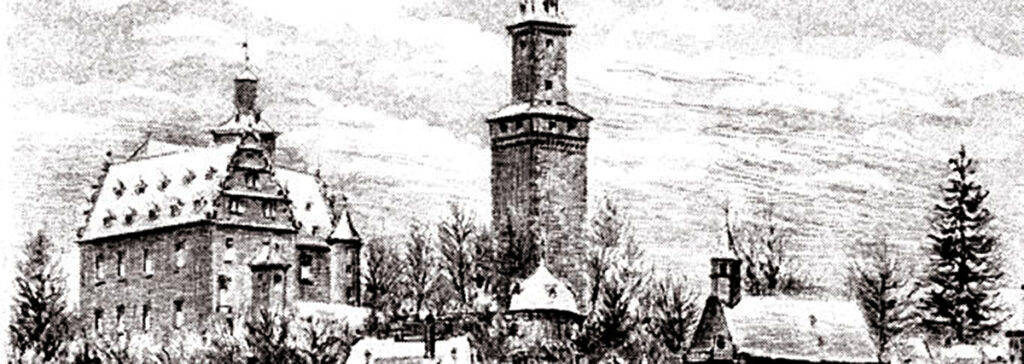
The castle in Kronberg lies on a rock spur on the southern slope of the Taunus and offers one of the most beautiful views of the Rhine-Main plain. The upper castle was probably built in the 12th century as an imperial castle on the Hohenstaufen crown; it served to strengthen royal power and control the road to Cologne.
The ruins of the upper castle have a closed wall ring. You enter through the gate of the chapel tower, which in the typical construction of that time has a colored frame made of red and white stones. The gate chapel lies above the archway. Only the east-facing chapel bay remembers the function of this room. The upper castle was completely renovated in 2001/02 and since then has also offered a line of sight to Falkenstein Castle.
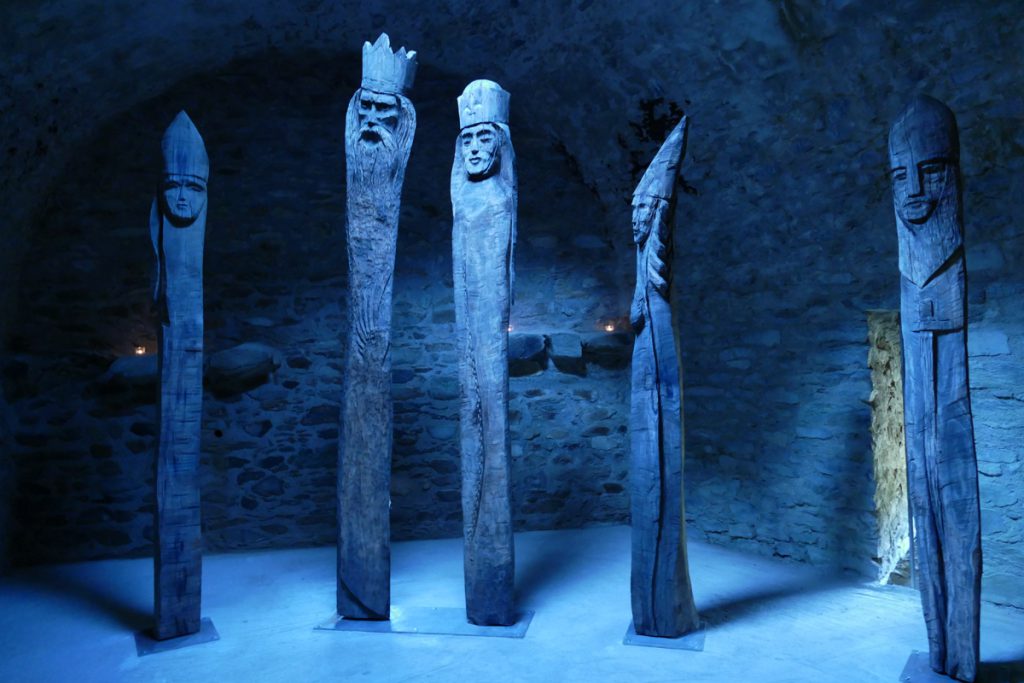
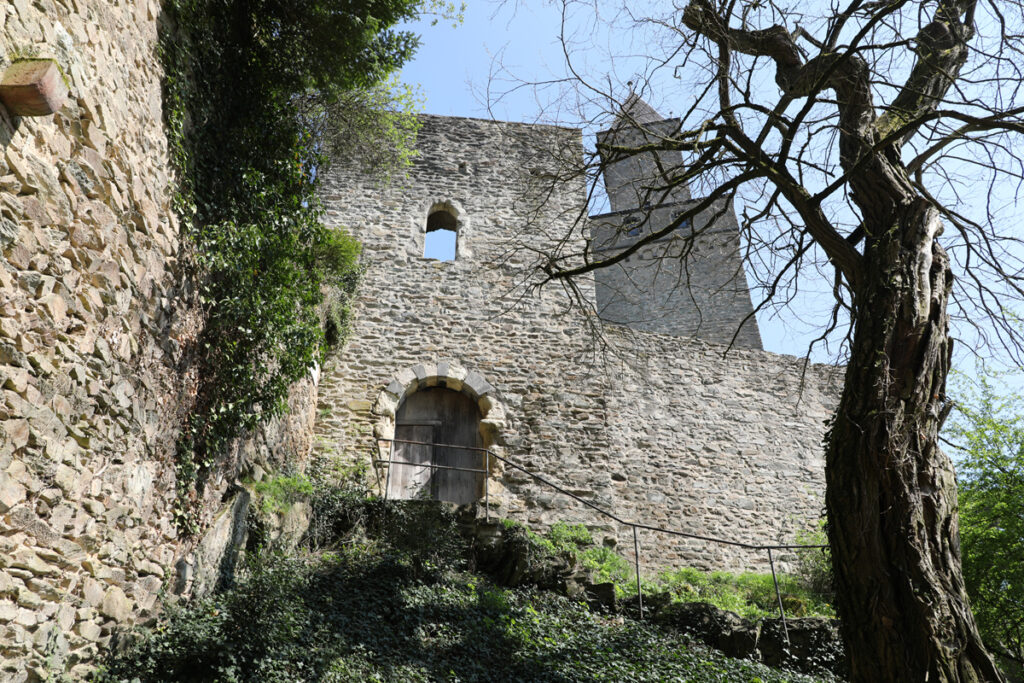
With the ascent of the almost 44 m high tower, visitors have a wide view of the surrounding area, on clear days even to the Spessart and the Odenwald.
In the so-called pentagonal tower, the oldest part of the upper castle, five wooden steles – „Die Aufrechten“ (Thomas Schmidt, 2018) – symbolize persons out of the history of the castle. The stelae were made from a 150-year-old beech from the castle that had fallen during a storm.

Once you have entered the castle through the main gate, you run towards the Mittelburg. This part of the castle with its two stately houses was settled by the lords of Kronberg from the 14th century. The narrow and impassable upper castle no longer met the demands of the residents. The Mittelburg consists of two corner houses. The Crown Tribe, the most important family branch of the Kronberg Knights, resided here. The west wing, the so-called “Great House”, was built around 1320. The north wing (today Burgmuseum) was completed around 1505, and on the ground floor there is a gothic kitchen with a large chimney. In the 17th century, the stair gables of the houses were removed and replaced by the tail gables that still exist today.
In 1704 the family died out in the male tribe and the Reichslehen fell to the Elector of Mainz, whose bailiff was based at the castle until 1710. During the Napoleonic Wars, French troops occupied the castle, which finally fell to Hessen-Nassau together with the city of Kronberg in 1802. Due to the reorganization of the empire Kronberg belonged to Prussia from 1866.
This eventful history is reflected in the documents handed down, which also report on the poor state of preservation of the castle. In 1871 the chapel was so dilapidated that it had to be closed. Even their demolition was discussed. The situation only improved when Empress Victoria, daughter of Queen Victoria and wife of Emperor Friedrich III, took care of the castle. Her renovation of the entire complex shapes the current appearance of the castle. She had some buildings added, such as the rampart and the gate of the Mittelburg. The youngest building on the castle is the Prince’s Tower, built in 1911, ten years after the Empress’s death. In 1912 the castle was opened to the public with a museum.
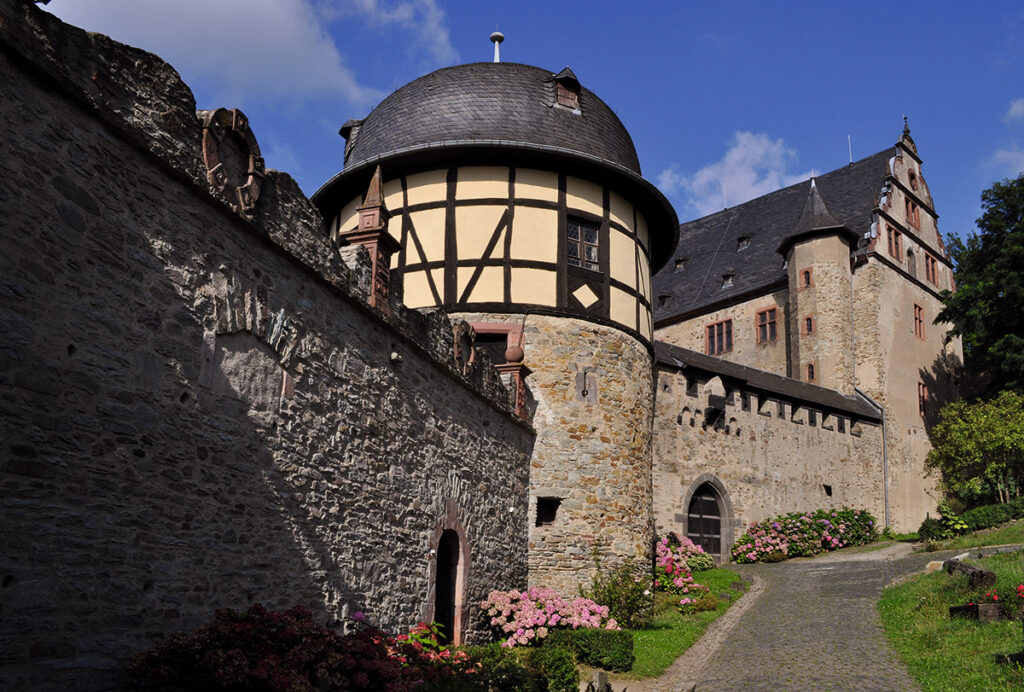
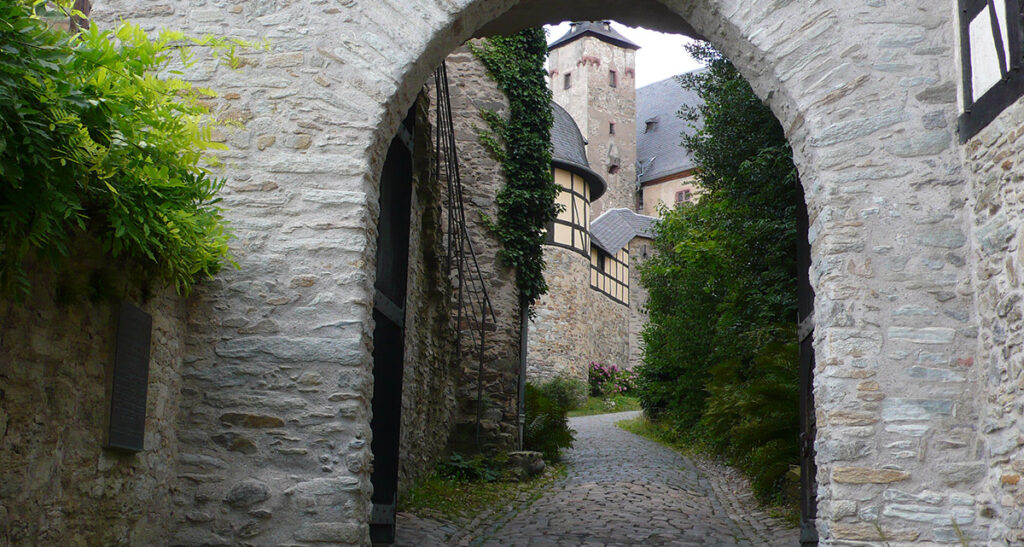
After the city of Kronberg acquired the castle from the ownership of the Hessische Hausstiftung in 1992, it founded the „Burg Kronberg im Taunus Foundation“ together with the castle association (Burgverein) in 1994. Their tasks include the preservation of the monument, the construction of a museum and the careful use of the castle through events.